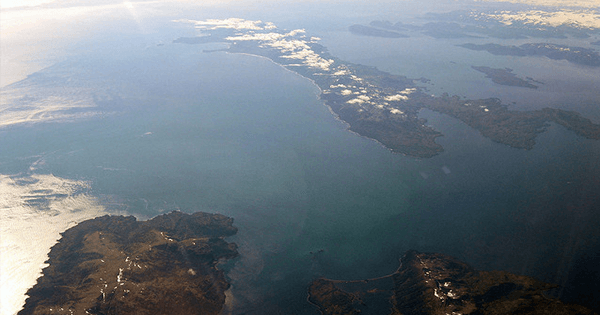
I’m so relieved that yesterday’s gale has passed. All day and into last night, wind whipped through town, gusting up to 40 miles per hour. The wind freaked out my kids as it ripped the car doors out of their hands. The air vents in our house sucked in and out noisily all day. The sky kept changing, different arrangements of grays and whites; a blue hole over the bay appeared in a moment and then was gone.
A storm like this always seems to arrive this time of year, a storm that yanks all the remaining leaves from the alders and birches, sucking the little color we have left and blowing it away. Now the fallen leaves are swirling around on the ground so loudly, it sounds like a steady rain in the pitch black of this morning.
Don’t get me wrong—I do love storms, usually. But tomorrow morning, I’m flying in a tiny plane to the Native village of Nanwalek, near the mouth of Kachemak Bay. Even in good weather, this flight is scary, with a hairpin turn required just before touchdown.
Nanwalek’s population is about 200 people, nearly all of Alutiiq descent. No roads lead to the village, which sits on the coast, at the mouth of a lagoon where salmon run each summer. People come and go mainly by small plane, though occasionally by boat. Like many Native villages in Alaska, the location of the community was once a temporary camp where people gathered seasonally to fish and hunt. But in the late 1700s, Russian sea otter hunters bombarded the region, establishing permanent hunting camps and trading posts, bringing their diseases and religion, and transforming how Native people lived. A small Russian Orthodox church with the characteristic triple cross sits on the hill above the village, and the local public school follows the Russian Orthodox calendar. Groceries come in by plane and are expensive. Many people in the village rely on traditional foods, including salmon put up half a dozen ways, seal, and berries.
My plan is to interview residents about climate change as part of a larger project to collect reflections, thoughts, and concerns from people—mostly women—all over this part of Alaska about the impact of environmental change on their families, their traditions, and their identities. Experts in the field generally agree that women around the world experience the effects of climate change differently than men do, and that they can play unique roles in their communities in responding to this change. I want to know: How are women in Nanwalek responding to their warming climate—and what do their responses tell us about what it means to be alive at this moment?
My guide in the village is Sally, an elder and the Sug’stun language teacher at the school. So far in my conversations with her and others, I’ve heard about low pink salmon returns, parasites in salmon, and mushy fish flesh. Sally said she’d meet me off the plane, or maybe send her husband. Before we head to the weekly Elders’ Tea, she’ll give me a tour of the village. It will take five minutes, she chuckled. Nanwalek is a small place, almost like one extended family living in a single neighborhood, perched on a narrow flat below the Kenai Mountains. There is so much I want to know.

